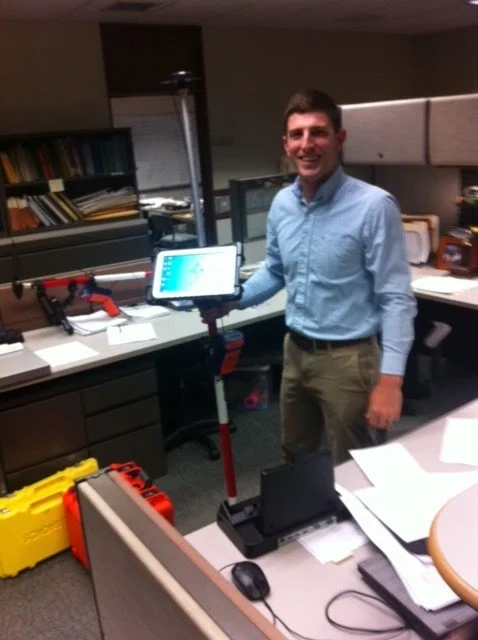GIS Data Management: Five things you need to know
/There is a data issue affecting facilities, municipalities, businesses, and organizations. Data is collected, sorted, resorted, and sorted again with little to no reward for the time and labor-consuming effort. Or worse- valuable data is left untouched, and unused.
With GIS technologies, you can make your data work for you. Information is no longer stored in multiple locations-maps, spreadsheets, notepads, clipboards, cell phones, email chains-but can now be stored in one spot.
With GIS, you can save time, improve processes, and get the information you need when you need it, wherever you are.
#1 - You use GIS every single day.
GIS technology connects the "where" with the "what". Geographic information combined with attributes, or "everything you need to know". Looking to buy or rent a home? Those phone apps are so convenient - open up the map, choose the location, and it shows all of the homes along with data about their price, their age, and more. Surprise! You just engaged with GIS. All the data ... one single spot.
What about when you are driving somewhere new? Do you utilize maps on your phone to locate the nearest gas station or coffee shop? You’re utilizing GIS! Have you noticed those roads turn red when there’s traffic? That’s all data, displaying in one interactive map. The help that comes if you are ever in an emergency? The responders depend on GIS. Google Earth- where you look up your own home for fun? GIS. GIS is something you use and benefit from every day, even if you are unaware of it.
#2 - It's nothing new. But it is constantly getting better.
At SSM, we've been providing clients with GIS Services for more than twenty years. When spatial databases were an idea of the future, we were there, signing our first GIS clients and leading the charge in making data meaningful.
With every new advancement in technology, we're finding new and better ways to help our clients raise efficiency. Finding new and easy ways to collect information, we're now building data analysis dashboards that trigger capital planning and infrastructure monitoring. Technological advances have propelled GIS into being not only a necessity for everyday use, but a strategic resource for industries all around the world.
#3 - Your data should be working for you.
Almost all data has a geographical component. By combining that with supporting attributes (i.e. photos, comments, service records) we're able to make your data mean more than it ever did before.
While flat maps and standard database systems offer you the surface, GIS technology takes what you know to a deeper level- showcasing relationships, patterns, and the connections between every piece of information you collect. GIS analysis uses location and attribution to solve complex problems. Questions like, "Where is...", "How long...", or "How many..." Because when data tells a story, you’re able to make smarter decisions in a shorter amount of time.
Paper plans and printed records are only good for the moment in which they were printed. GIS turns your static data into living, breathing, information. Information that's always available in one place and is always showing your most up-to-date information.
But it doesn’t stop there. Through GIS, we have also been able to streamline information collection. Throw away clipboards and paper forms. Instead, field team members simply need a mobile device. Customized data collection apps allow field teams to gather data and pictures with smart devices - and that information is directly populated into your GIS map. No filling out forms. No copying forms into spreadsheets, or rewriting information. One place to collect, one place to review.
#4 - It's meaningless if you can't access it.
The power of GIS lies in creating meaningful data that's there when you need it. Maintenance records, history, comments, and photos - wherever you are. Data is no good if you can't find what you need when you need it. How many projects were put on hold, or at least delayed, because someone, somewhere, had a paper that you couldn’t get to? How many emergencies were delayed because file hunting took longer than it should?
When your assets are in the cloud - when you utilize GIS for asset management - projects don’t stop. And emergencies? You’re ready for them too. GIS systems offer the convenience of accessing data from a desktop browser or mobile app. That means you access what you need whether you're in the office, in a meeting, or out in the field.
#5 - You can benefit from GIS, even if you you're not sure how.
Re-configuring your entire asset management system to GIS sounds intimidating. However, the benefit of GIS is its potential for growth. We’ve worked with municipalities that wanted to start small. All they wanted was pictures to be accessible in the field. So, instead of storing photos on hard drives- we connected them to a map. So when a crew arrives to repair an underground utility, they can quickly understand the configuration before they start digging. We’ve also worked with utility teams that went bigger- digitizing records for every single pipe, valve, and hydrant in their system. Everything they own including scans of hand-written plans accompanying their location.
GIS is here for what you need it for. For many, starting small and simple is a great first step. Consult with our GIS team to jumpstart your data collection and analysis.









